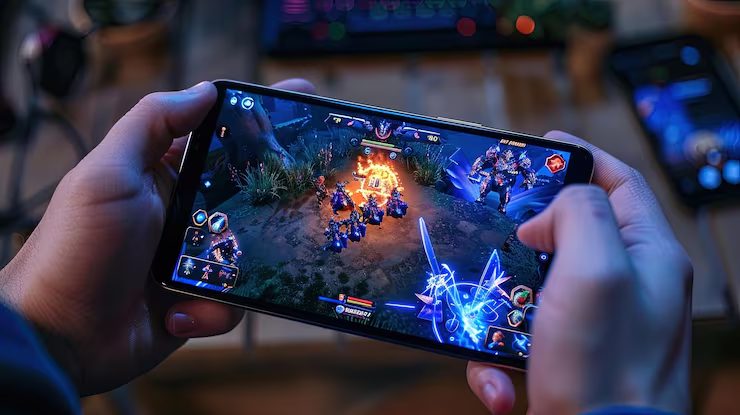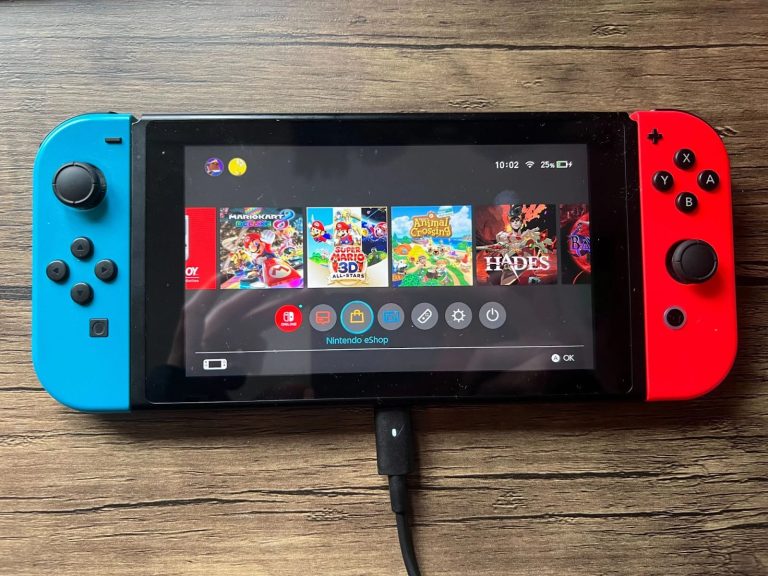Top Mobile Games People Are Playing in 2025

You’re playing in a year where mobile games combine quick matches with deep progression, smooth 120Hz action, and cross‑device saves. Hero shooters, sharper battle royales, and real‑time dueling strategy lead the charts, while hyper‑casual hits still flood your daily queue. Battle passes, clubs, co‑op raids, and instant clips keep you coming back between errands. But which titles actually define 2025—and how are they changing the way you compete?
The Rise of Mobile Gaming in 2025
Kick off 2025, and mobile gaming snaps into focus as the industry’s clear growth engine: bigger audiences, higher spending, and console‑grade experiences in your pocket. You’re seeing flagship phones push 120Hz displays, ray‑traced visuals, and haptics that match handhelds. Cloud saves, cross‑progression, and controller support make switching devices effortless, so you play anywhere without compromise.
You’re also benefiting from smarter discovery. Curated storefronts, on‑device recommendations, and social sharing surface quality titles fast. Subscriptions bundle premium games, while fairer monetization and transparent battle passes keep you engaged without guesswork. Esports and creator ecosystems meet you where you live—short clips, live drops, and instant installs. With 5G and Wi‑Fi 7 reducing latency, you jump into competitive matches and co‑op raids on the go, reliably and smoothly.
Why Mobile Games Are More Addictive Than Ever
Even as hardware blurs the line with consoles, it’s the design loops that hook you harder than ever. You open a game for a minute and find layered goals: a daily streak, a bite-size challenge, a long-term unlock. Variable rewards keep you curious; timers nudge you to return. Clear UI and haptics make every tap feel meaningful, while adaptive difficulty hits your skill sweet spot.
Personalized offers, season passes, and limited-time events create urgency without demanding marathon sessions. Social nudges—co-ops, guild check-ins, light competition—turn quick play into a habit. Cloud saves and offline modes remove friction, so you play anywhere. Smart notifications arrive when you’re likely free, not just frequently. The result: short loops, constant progress, and a steady urge to come back.
Brawl Stars – Fast Strategy and Deep Progression
If those tight reward loops keep you coming back, Brawl Stars shows how to make every minute count. You jump into brisk 3v3 skirmishes or solo showdowns, make snap decisions, and feel progress after every match. Each Brawler shifts your tactics—ranges, gadgets, star powers, and supers create micro-combos that reward timing and positioning.
You’ll chase clear goals: daily quests, token doublers, seasonal tracks, and rotating modes that keep metas fresh. Map modifiers and event rules force you to adapt, not grind the same playbook. Smart loadouts matter—pair a mobility super with a control gadget, then rotate lanes to swing momentum.
Clubs, Power League, and ranked ladders give structure to mastery. Short matches teach fundamentals fast; deeper progression keeps you experimenting longer.
Clash Royale – Competitive Gameplay in Short Sessions
While matches last just a few minutes, Clash Royale delivers real-time duels with razor-tight decision-making. You read your opponent’s rotation, time elixir trades, and punish misplays with precise counter-pushes. Every card you drop matters, from cycling cheap units to protecting your win condition. You’ll learn placements, kite paths, and spell value, then adapt when sudden bridge pressure forces a clutch defense.
Ranked ladders, seasonal card balances, and evolving metas keep you iterating decks—miner control, hog cycle, splash-yard, or beatdown—depending on your style. For deeper improvement, you can check the Clash Royale strategy guides on BrawlOne. You’ll optimize card levels, refine archetypes, and practice micro like split-lane pressure and predictive spells. Quick queues turn spare minutes into meaningful progress. Win or lose, replays reveal patterns to exploit next match. It’s sharp strategy, compacted into perfect commute-length battles.
PUBG Mobile and Free Fire – The Battle Royale Evolution
Drop into shrinking circles where every footstep matters: PUBG Mobile and Free Fire distill battle royale into fast, touch-first firefights with distinct pacing and personality. You’ll feel the difference immediately: PUBG prizes tactical sightlines, realistic ballistics, and tension; Free Fire pushes sprint-speed matches, flashy abilities, and instant rematches. Either way, you’re scanning rooftops, juggling ammo, and timing third-party angles to outlive the lobby.
Shrinking circles, touch-first firefights: PUBG’s tactical tension meets Free Fire’s rapid, flashy chaos.
Both reward map knowledge and micro-aim, but they diverge in rhythm. PUBG asks you to rotate smart with utility and vehicles; Free Fire lets you snap into a duel, pop a skill, and reset. To evolve your play:
- Master drop zones, timing hot vs. safe.
- Optimize HUD, gyro, and sensitivity.
- Review endgames, refine rotations and utility.
Hyper-Casual Games Still Dominate Daily Downloads
Often overlooked by core gamers, hyper-casual titles still top daily download charts because they strip play down to one-thumb loops, instant feedback, and zero learning curve. You can open one on a commute, fail in seconds, and try again without friction. These games don’t ask for tutorials or long sessions; they reward micro-moments with crisp taps, swipes, or holds.
You chase high scores, unlock simple skins, and move on when a new fad hits. Developers iterate fast, remixing physics puzzles, endless runners, and timing challenges into snackable hits. Ads and lightweight monetization keep access free, so you’re never gated by paywalls. With tiny file sizes, they install instantly and run smoothly on budget devices, making them the most universal, disposable, and habit-forming downloads today.
Social Features Make Games More Engaging in 2025
Hyper-casual loops hook you fast, but 2025’s stickiest mobile games keep you coming back by plugging play into people. You don’t just chase scores—you join squads, drop into voice chat, and celebrate wins with instant clips. Guild quests, co-op raids, and neighborhood events turn quick sessions into habits because friends notice when you show up—and when you don’t.
You feel progress accelerate through shared goals, fair matchmaking, and social currencies that reward helpful play, not just skill. Smart nudges respect your time, letting you opt into pings, parties, and post-match rematches.
1) You play longer when progress depends on your crew, not grind.
2) You return faster when friends invite you, not ads.
3) You spend wiser when trust drives recommendations.
The Future of Mobile Gaming Beyond 2025
While 2025 cements social play, the next era blends AI companions, ambient worlds, and device-agnostic access so you carry a living game across phones, glasses, cars, and TVs. You’ll play one session that shifts context: a puzzle on your watch, a raid in AR, a strategy turn on your TV, all synced.
You’ll rely on AI NPCs that learn your style, coach your tactics, and role-play with coherent memory. Procedural worlds won’t reset; they’ll evolve with seasons, traffic, and local weather. Haptics and spatial audio will ground you without bulky gear. Payments will fade behind subscriptions, battle passes, and platform perks. You’ll own cosmetics portable across ecosystems. Privacy controls will matter, letting you tune data sharing while still unlocking smarter, more personal play.
Frequently Asked Questions
Which 2025 Games Support Full Offline Play Without Microtransactions?
You’ll find full offline, no-microtransaction play in titles like Monument Valley 3, Stardew Valley+, Dead Cells: Return to Castlevania, Vampire Survivors+, Slay the Spire Mobile, Oxenfree II, LIMBO/INSIDE bundles, and Downwell+. Check platform listings to confirm.
What Parental Controls Help Limit Spending in Mobile Games?
Use OS-level controls: enable Apple Screen Time or Google Family Link. Require purchase approvals, set spending limits, restrict in‑app purchases, and block payment methods. Create child profiles, whitelist apps, enforce age ratings, and monitor activity with alerts.
How Can I Transfer Progress Between Ios and Android?
Use the game’s cloud account (Facebook, Google, Apple, or publisher ID) to sync. Link on iOS, then log into the same account on Android. If unsupported, contact support or use in-game transfer codes/backups.
Which Controllers Are Compatible With Top Mobile Games in 2025?
You can use Xbox Series X|S, Xbox One, PS5 DualSense, PS4 DualShock, Nintendo Switch Pro (Android), Backbone One, Razer Kishi, 8BitDo, SteelSeries Nimbus+, and MFi controllers. Pair via Bluetooth or USB; configure in-game settings.
What Are the Best Settings to Reduce Battery Drain While Gaming?
Lower screen brightness, cap FPS to 30–45, disable 5G, use Wi‑Fi, turn off Bluetooth/GPS, enable battery saver, reduce resolution, close background apps, limit notifications, cool your phone, avoid charging while playing, and use performance/balanced mode—don’t max everything.
Conclusion
You’re living in a golden age of mobile gaming. Short, high‑intensity matches, silky 120Hz visuals, and low‑latency 5G keep you locked in, while battle passes, clubs, and cross‑progression reward every session. Whether you’re pushing trophies in Brawl Stars, clutching Clash Royale overtime, or chasing a final circle in PUBG Mobile or Free Fire, you’ve got depth on demand. Hyper‑casual breaks fill the gaps, and cloud saves follow you everywhere. Next up: smarter AI, tighter social play, and seamless screens.

